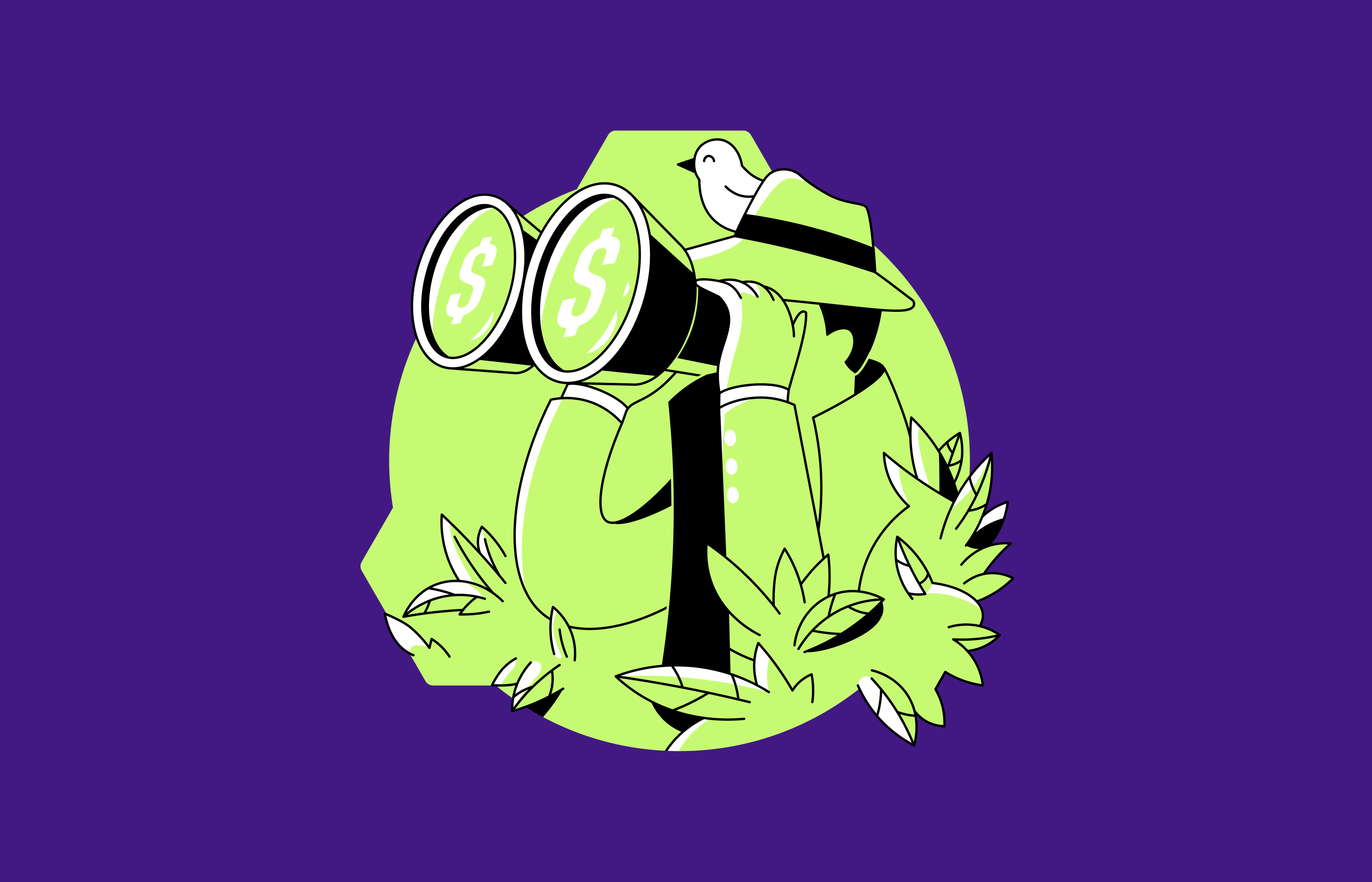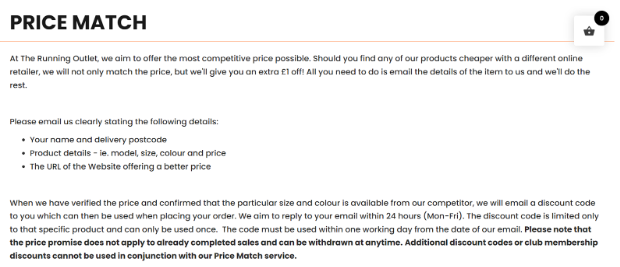Maximize Your Profit: Harness the Power of Shifted Market Pricing
Discover how to maximize your profits with shifted market pricing strategies in our comprehensive guide. Learn about different pricing models, their...
Pricing is always tricky. Finding the right balance and comparing your pricing with your competitors' is even more complicated. Learn how to get it right every time.

Are you trying to nail the perfect pricing for your product?
Try shifting your perspective from "How do we get customers to pay for our product?" to "How do we provide the best value on the market while also achieving our business objectives?"
By making this switch, you’ve entered the world of competitive pricing.
Competitive pricing empowers you to set the perfect price point for your products by decoding market dynamics, competitor behavior, customer preferences, and product value.
In this post, you’ll learn how to harness competitive pricing to balance customer satisfaction and business success.
Competitive pricing is the practice of setting a price point for a product or service that is in line with market expectations.
As the name implies, competitive pricing involves gathering and analyzing competitor prices, discounts, promotions, and value-added services. Then you’ll do customer research to understand customer perceptions, preferences, and willingness to pay for a product at a desired price.
In addition, competitive pricing considers internal factors like an organization’s value proposition, production costs, desired profit margins, and prevailing market conditions.
Then, the tricky – some say “fun” – stuff happens, balancing the competitors' costs, the customers' preferences, and the organization's needs. Get ready to juggle!
It’s a Goldilocks conundrum: If your price is too high, you’ll lose sales. If your product is priced too low, you’ll struggle to break even or turn a profit.
Competitive pricing helps you get to that “just right” price point.
Pricing this way also lets you understand your customers better. Most importantly, you’ll discover what influences how customers view costs for a solution like yours.
With a grasp on these purchase factors, you’ll have more input to build a solid pricing model that aligns with customer preferences without losing market share, profits, or revenue.
Think of competitive pricing as a reality show. Along the way, you'll face a series of challenges that require a blend of strategic foresight, adaptability, perseverance, and creativity to succeed.
Here are some of the biggest challenges you’ll most likely face.
During a competitive pricing analysis, you collect and analyze data from your competitors, target customers, and industry. The more relevant and accurate your data is, the better your pricing recommendations will be.
But finding reliable pricing for the right competitors takes time and effort.
The first issue standing in your way of getting good data? Narrowing down your competitor list, especially if you’re in a crowded market.
Here’s a tip on how to round down all your competitors to a meaningful, manageable list:
Once you identify your competitors, place them in two categories: direct and indirect competitors.
Your direct competitors are those businesses that sell a similar product to the same target market at a similar price point. Think Pepsi and Coca-Cola.
Your indirect competitors sell alternative products to the same audience as you do at a comparable price point.
So, if you’re either Pepsi or Coke, you’ll want to go beyond traditional sodas and look at energy drinks, flavored sparkling water, and sparkling probiotic drinks – at least the ones they don’t already own. Think Pepsi and Perrier water. They both serve the same purpose, but in a different way. Or, to get even more indirect, think Pepsi versus Yeti water bottles.
To start, select your top 3-5 direct competitors and 2-3 indirect competitors.
Not every company provides their pricing online, further adding to the challenge. If you have customers who used to use your competitors, they may be willing to share what they were paying.
If you had a dollar for each time you read that we live in an “ever-changing” economy, you’d be drinking [[insert your favorite beverage]] on the coast of [[insert your favorite seaside destination]].
And because market conditions are dynamic, it’s tough to predict with certainty how the market will look in the next 6-12 months.
With in a half year, you can easily face:
Given these market dynamics, you must ensure a consistent collection of data from different sources to continuously inform your pricing strategy. If your competitors do publish pricing online, you can use competitive intelligence automation like Kompyte to keep up with changes in real time.
If your product is geared toward a highly regulated market or is connected to a third-party API, your product offerings are often quite similar to your competitors. So, if features are the same, and your price is in line with your competitors, how do you show your company’s value to your prospective customers?
In other words, it’s often hard to explain how the differences in your product are worth your customer’s investment.
For example, your customers might love your 24/7, multilingual support, their customer success manager, your Facebook or Slack group, or ongoing customer events. Highlight these included extras as additional benefits accompanying your price.
A great place to find out what your customers love about you is on review sites. For software companies, G2 and Capterra can practically write your marketing messaging for you.
Kompyte can help you keep up with your own reviews, but also pulls in competitor reviews, allowing you to see what their customers like and dislike, allowing you to set yourself apart.
You can speed up the process of analyzing reviews (yours and theirs!) with tools such as ChatPDF. See how here.
Once you’re done with your competitive pricing analysis, choose a pricing model based on your business goals and the growth stage of your business.
Here are five common pricing models to consider:
With price skimming, a company charges a high price for their new products when there’s little to no competition. Over time, the company reduces the product’s price to appeal to the broader market and to account for competitors entering the market.
Price skimming works well for established brands with a large market share and many loyal customers willing to pay high prices or wait until they are within reach.
Because customers are willing to buy their products at a premium with this model, the profit margin on a price-skimming model is high.
Companies who price match promise to sell their offerings at an equal or lower price than their competitors. This is most common in retail and ecommerce settings. Rarely do those in other industries publicly offer price matching. Though when it comes down to closing a deal, some companies will unofficially price match by offering a discount to try to win the business.
Most (if not all) buyers check out competitors’ prices before deciding to buy, so a price match reassures them that a company’s prices will not be higher than anyone else in the marketplace.
However, when using price matching, one might lose customers if a competitor uses the same strategy, and it can quickly become a race to the bottom as each business tries to sell for less than the other.
With dynamic pricing, you adjust the price base on factors such as supply and demand or competitor pricing. Benefits include the potential for increased profits, increased competitiveness, improved customer perception, flexibility, and dynamic revenue management.
Read more about the benefits and risks of shifted-market pricing here.
Penetration pricing involves setting the initial price of your product lower than your competitors to attract customers and increase demand.
There are a few risks with penetration pricing. The first is your reputation. By using the penetration model to price your solution, you’ll be known as “the cheap brand” rather than the “the gold standard,” the “dependable option,” or the “company with great customer service.”
Customers who you acquire through this model will become accustomed to the low prices and expect them in the long run, leading to decreased profits for the business. If you increase your prices in the future, customers might feel short-changed and jump ship.
Premium pricing involves charging a higher price than the existing market rate. This strategy targets customers who are willing to pay more for the perceived value of the product.
You can use premium pricing to increase sales and profit margins when targeting customers with more disposable income.
Premium pricing also helps you differentiate yourself from your competitors by establishing your brand as high-end and exclusive and earning loyalty from your customers who want to be associated with you.
However, premium pricing can also make it difficult to attract new customers and retain existing ones, as customers may not be willing to pay the higher prices—especially when their preferences change or the economy fluctuates.
In the end, competitive pricing is about finding a balance – what customers like, what your company needs, and what your competitors are doing. Being nimble and organized are crucial to ensure ongoing success of your pricing strategy. Technology can help you stay on-top of the latest trends in the marketplace (including price), but your willingness to adapt to change comes from within.
Discover how to maximize your profits with shifted market pricing strategies in our comprehensive guide. Learn about different pricing models, their...
Competitor Analysis Report (Part III): Evaluate your competition’s product and pricing strategy to define your future product roadmap.
Reduce the complexity of performing a competitive pricing analysis with these top questions from Kompyte.
Be the first to know about new B2B SaaS Marketing insights to build or refine your marketing function with the tools and knowledge of today’s industry.